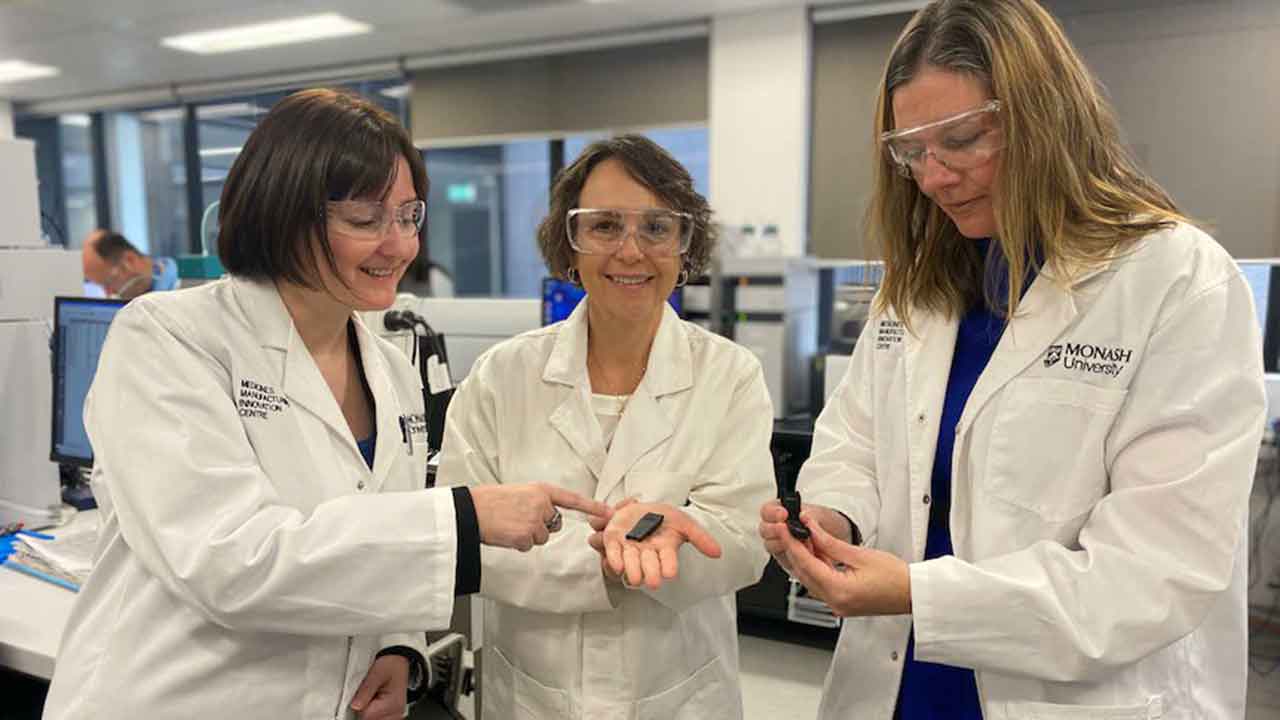New inhalable device could be lifesaving for new mums

A new inhalable product more than a decade in the making could save the lives of tens of thousands of new mothers.
The device, developed by Melbourne researchers, looks like a small whistle and allows oxytocin to be inhaled rather than injected, to prevent postpartum haemorrhages.
Postpartum haemorrhages happen when a new mother experiences excessive blood loss after giving birth.
As the leading cause of maternal mortality globally, these haemorrhages occur in up to 18 percent of births and result in an estimated 60,000 deaths each year across the world.
Oxytocin is the recommended first choice for preventing postpartum haemorrhage due to its greater effectiveness in comparison to other drugs and has fewer side effects, and is currently administered via an injection.
Researchers from the Institute of Pharmaceutical Sciences at Monash University partnered with Johnson & Johnson have developed a new inhalable form of oxytocin that, unlike the injectable form, doesn’t need to be refrigerated, making it a less invasive and easier to distribute option for developing countries.
“Many women in Australia will receive an oxytocin injection after every childbirth to prevent or lower risk of postpartum haemorrhages,” project leader Michelle McIntosh said.
“We needed something that was really low cost and simple to use, but just as effective.”
The World Health Organisation recommends every woman in the world to be given an injection of oxytocin after they give birth, but Professor McIntosh said this isn’t always possible.
“Unfortunately, in a lot of low-resource settings, having access to someone present when you give birth, someone who is trained to give an injection and a product that has been maintained in cold storage, is very challenging.”
Even in Australia, Professor McIntosh said the rate of postpartum haemorrhages has been increasing significantly.
“While our focus has always been on low-resource settings, obstetricians in Australia and other developed countries [are] also quite keen to look at inhaled oxytocin,” she said.
“That’s because it would take away the risk of needlestick injuries, it’s less invasive than a painful intramuscular injection and there are cohorts of patients we think would benefit from inhaled administration.”
Clinical trials of the device, which could still be several years away from commercial use, have been funded by the Victorian government’s Medical Research Acceleration Fund, which allows researchers to develop new healthcare solutions in partnership with experts from Johnson & Johnson.
Research and innovation to address the leading cause of maternal mortality 💕
Excited about our ongoing partnership @JNJInnovation
Wonderful to visit @MIPS_Australia
Thanks to Delia for sharing her story with @bridgerollo https://t.co/4lPRvIC8h7— Jaala Pulford MP (@JaalaPulford) July 15, 2021
“When medtech, biotech, and pharmaceutical businesses innovate, they change lives,” said Victoria’s Minister for Innovation, Medical Research and the Digital Economy, Jaala Pulford.
“This new powder is going to be an extraordinary additional tool for women and their doctors and midwives and nurses [to deal] with something that comes on very suddenly and would be extremely terrifying.”
Image: Monash Institute of Pharmaceutical Sciences / Twitter
